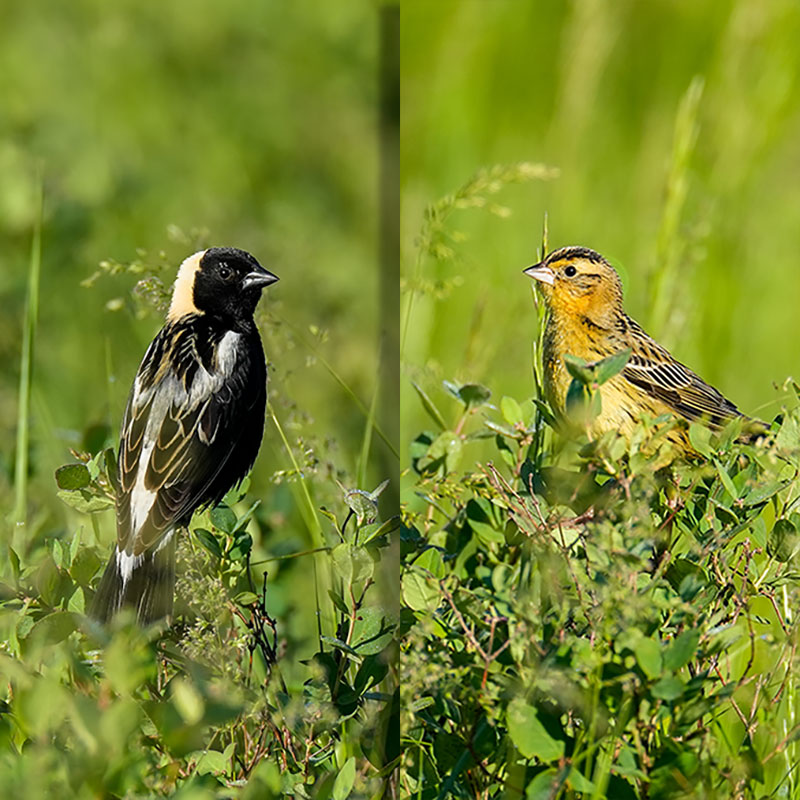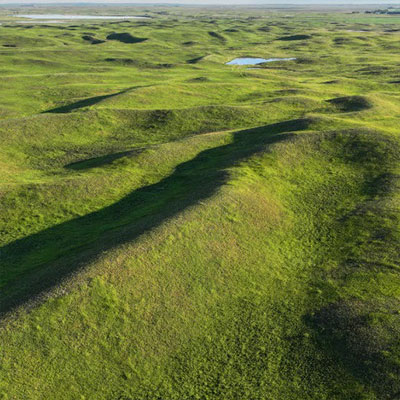Bobolink

NDGF
L 7”, WS 11.5”, 1.5 oz. Males sport a black belly, white rump and back, white patch on wings, and yellow hind neck. The female is yellowish-buff overall.
Status in North Dakota
Occurs in North Dakota from early May to late September. Peak breeding season early June to late August.
Reason for SWAP Designation
At-risk, ND range important (SGCN b.).
ND ranks 1st out of 32 states for highest percent of the global population (19.32%) during the breeding season (eBird).
The Bobolink is declining, and the population decreased 60% since 1970.
ND has high stewardship responsibility for this species.
Threats
Loss of grassland, especially the loss of CRP.
Degradation of grasslands from invasive plants, woody encroachment, succession, and loss of diversity.
Loss of ranching heritage and grass-based operations, grazing is essential to grassland health and diversity.
Classified as climate-threatened, Bobolink is projected to lose more than half of its current distribution by 2080, with potential net gains of new areas (Audubon).
Moderate to heavy Brown-headed Cowbird parasitism.
Direct and indirect impacts from energy development, Bobolinks exhibit displacement from areas within and surrounding wind turbines.
Research and Monitoring
Habitat requirements and effects of management practices such as grazing, burning and haying have been broadly researched on the breeding grounds.
Additional information is needed on migration and wintering behaviors.
The Breeding Bird Survey, eBird and Partners in Flight Databases are key sources of information on distribution and population trends.
Management Recommendations
- Protect and conserve large, intact tracks of native prairie/unbroken grassland and tame grassland.
- Reconstruct or restore grassland adjacent to existing tracts of native prairie/unbroken grassland.
- Graze or hay expired CRP. The density of Bobolinks is 94% lower in CRP fields converted to cropland, but effects are less if expired CRP is converted to grazed grassland (-58%) or hayland (-32%).
- Promote well-managed grazing lands and working grasslands for biodiversity, sustainability, and resiliency.
- Prevent or remove shrubs and tall woody vegetation in grasslands, either mechanically or by prescribed fire.
- Delay mowing or haying until August 1. Provide hayland areas and mow as late as possible. High densities of Bobolinks have been found using hayland mowed the previous year.
- Avoid or minimize placement of development (e.g. energy, housing, utility lines) or other human infrastructure in native prairie/unbroken grassland and tame grasslands.
- Follow beneficial or best practices during the design, siting, construction, operation, and maintenance of tall structures (e.g. transmission lines, communication towers, wind turbines).



